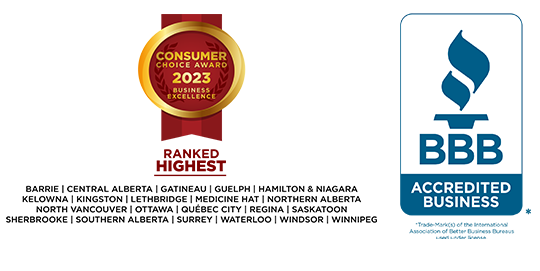The Struggle With Rising Debt
What type of debt are your clients struggling with most?
- Consumer credit (not mortgages or vehicle loans) both for homeowners and non-homeowners
- People who purchased vehicles and other higher value items have been able to lower their debt level by having the asset seized by the creditor. This action hurts a person's credit rating, but it also frees up a lot of cash per month to pay down other consumer debt.
- People who purchased homes with higher interest lenders who were not able to refinance their mortgage with a conventional bank after a few years. Upon learning they couldn't qualify for a lower interest rate, they found their monthly minimum payments were unsustainable.

What are the primary reasons people are seeking out debt help?
In the Cariboo, many people were waiting for a turnaround in the economy that would allow them to earn more money in order to pay down debt. When this turnaround didn't happen as quickly as people expected and certainly not to the extent people expected, many started using other resources to maintain their living costs.
What are the contributing factors to rising debt in the region?
Homeowners
- Low interest rates kept mortgage costs low and allowed consumers to spend more on discretionary expenses. Unfortunately, many consumers were using credit rather than paying cash for these expenses. Lower mortgage rates would have been the best time to pay down high interest debts. Unfortunately, people increased their debt load during this period rather than paying it down.
- In the past, many, many homeowners were able to sell their house and use the equity from the sale to pay off their debts. Since house prices have not increased in the past few years and in many cases decreased, the equity has not been available to pay off the other debt.
Non-homeowners
- Consumers who do not have a home have an advantage in that they are more mobile and can move to seek better employment opportunities elsewhere. People from the area have sought employment elsewhere without moving away. When those opportunities have not materialized (for example, due to lower employment in the energy sector in northeastern BC) and local opportunities have not increased, then people have not been able to pay down debt. In fact, many have had to increase their debt to stay living in the region.
How to manage rising debt? Plan your budget in just 10 minutes a month
- Budgeting really only takes 10 minutes per month. If you set up your bank accounts properly and have automatic deductions put into separate accounts for different expenses, you make budgeting easy while paying down your debts.
- Ideally, have four bank accounts (3 chequing and 1 savings).
- Chequing Account #1 - Deposit all your income into this account.
- Chequing Account #2 - Regular expenses (rent or mortgage, insurance expenses, utilities, debt repayment, etc). Add up all these expenses for the month and have this much automatically transferred from Chequing Account #1 into Chequing Account #2. Best to split the transfers up to coincide with paydays, pension deposits, etc. Chequing Account #3: An account to save for 'irregular expenses'. These are expenses that you will not have to pay for some time, but they are substantial or an expense you know you will pay over the next year or two, but you don't know exactly how much it will be or when you will incur the expense. Examples could include car repairs, medical bills, Christmas and other celebrations, holidays, etc. Essentially, you estimate how much these will cost and when you think you may have to pay them. Then divide the expense by the number of paydays you will have until the expense is incurred. Have that amount automatically transferred from Chequing Account #1 to Chequing Account #3. In doing this, you will always have the money to pay for these larger expenses and you won't need to rely on credit.
- Savings Account - Everyone should have a savings account with a steady amount being deposited into it. For people with debt this is an emergency fund in case all you other planning didn't account for a really unexpected expense. For people with no debt this account will collect your monthly deposits that can go into a retirement fund. Set up an automatic transfer from Chequing Account #1 to Savings each payday.
- Result: After all the automatic transfers have occurred you will find you have much less money in Chequing Account #1. Now it's very easy to budget your groceries, clothing, toiletries, entertainment, fuel, etc. You may not have nearly as much money left in Chequing Account #1 as you thought you would or as much as you would like, but this simple budget plan may be the reason your debt kept starts to decrease over the years as opposed to increasing.

